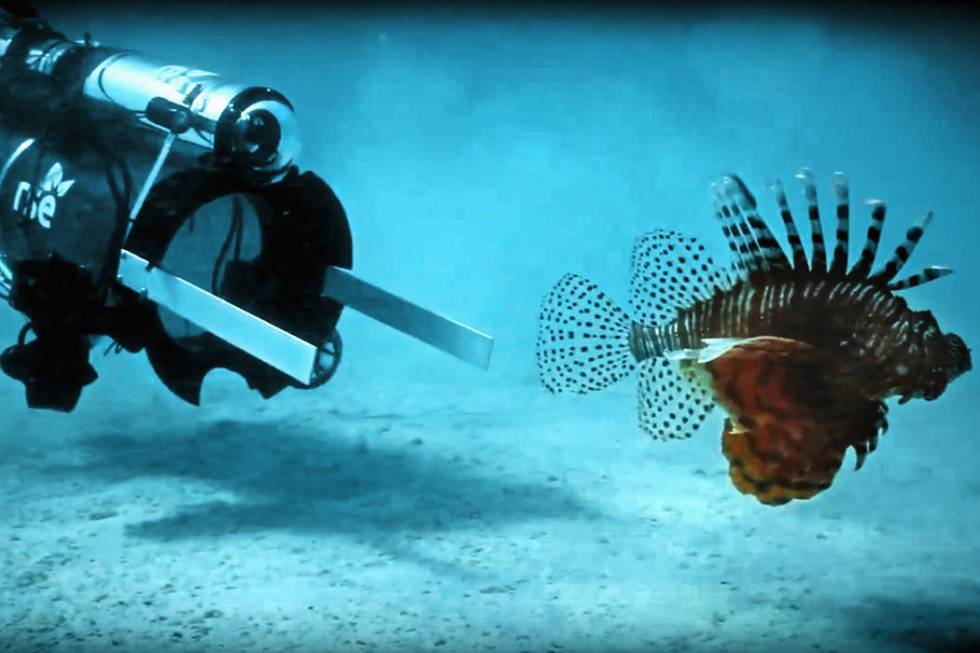Fight against invasive species goes high-tech

WASHINGTON — A robot zaps and vacuums up venomous lionfish in Bermuda. A helicopter pelts Guam’s trees with poison-baited dead mice to fight the voracious brown tree snake. A special boat with giant winglike nets stuns and catches Asian carp in the U.S. Midwest.
In the fight against alien animals that invade and overrun native species, the weird and wired wins.
“Critters are smart — they survive,” said biologist Rob “Goose” Gosnell, head of the U.S. Department of Agriculture’s wildlife services in Guam, where brown tree snakes have gobbled up nearly all the native birds. “Trying to outsmart them is hard to do.”
Invasive species are plants and animals that thrive in areas where they don’t naturally live, usually brought there by humans, either accidentally or intentionally. Sometimes, with no natural predators, they multiply and take over, crowding out and at times killing native species.
Now, new technology is being combined with the old methods — weed pulling, trapping and pesticides. Finding new weapons is crucial because invasive species are costly — $314 billion per year in damages in just the United States, United Kingdom, Australia, South Africa, India and Brazil.
It’s also one of the leading causes of extinction on islands, such as Guam, according to Piero Genovesi, an Italian scientist who chairs the invasive species task force for an international organization.
“We have totally new tools that were just unthinkable a few years ago,” Genovesi said.
Case in point: There are companies that now market traps for wild pigs that are triggered by cellphones.
“There’s enough activity that there’s starting to be an industry,” said University of California, Santa Cruz research biologist Bernie Tershy.